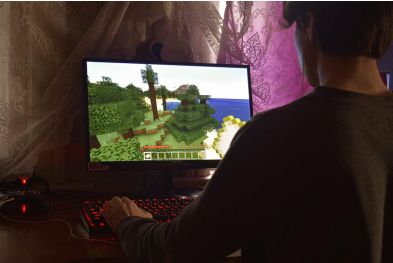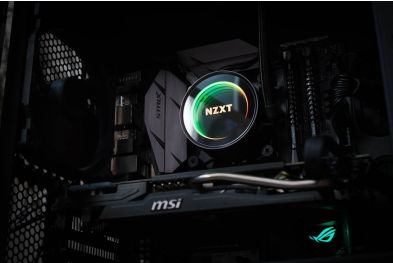How to Build a Balanced, Cost-Effective PC
Building a PC can be an exciting but daunting task, especially when you’re trying to balance performance and cost. Whether you’re a gamer, content creator, or everyday user, creating a balanced, cost-effective PC is all about making smart choices. In this guide, we’ll walk you through the steps to build a PC that delivers excellent performance without breaking the bank.
Why Build a Balanced, Cost-Effective PC?
A balanced PC ensures that no single component bottlenecks the system, while cost-effectiveness means you get the best value for your money. This approach is perfect for:
Gamers: Enjoy smooth gameplay without overspending on unnecessary features.
Content Creators: Handle demanding tasks like video editing and 3D rendering efficiently.
Everyday Users: Get a reliable system for work, browsing, and entertainment.
Step 1: Define Your Budget
Before you start, determine how much you’re willing to spend. A balanced PC build typically ranges from 600to600to1,200, depending on your needs. Allocate your budget wisely across components to avoid overspending in one area.
Step 2: Choose the Right Components
1. Processor (CPU)
The CPU is the brain of your PC. For a balanced build, consider mid-range options like:
AMD Ryzen 5 5600X: Great for gaming and multitasking.
Intel Core i5-12400F: Excellent performance at a lower price point.
2. Graphics Card (GPU)
The GPU is crucial for gaming and content creation. Look for cost-effective options like:
NVIDIA GeForce RTX 3060: Perfect for 1080p and 1440p gaming.
AMD Radeon RX 6600 XT: Offers great value for 1080p gaming.
3. Memory (RAM)
16GB of RAM is the sweet spot for most users. Choose DDR4 RAM with a speed of 3200MHz or higher for optimal performance.
4. Storage
SSD: A 500GB NVMe SSD is ideal for your operating system and frequently used applications.
HDD: Add a 1TB or 2TB HDD for additional storage if needed.
5. Motherboard
Choose a motherboard that supports your CPU and has the features you need. For example:
AMD Build: B550 chipset.
Intel Build: B660 chipset.
6. Power Supply (PSU)
A 550W or 650W PSU with an 80 Plus Bronze rating is sufficient for most mid-range builds.
7. Case
Pick a case that fits your components and has good airflow. Popular budget-friendly options include the NZXT H510 and Cooler Master MasterBox Q300L.
Step 3: Prioritize Performance Over Aesthetics
While RGB lighting and sleek designs are appealing, prioritize performance and functionality. Focus on components that offer the best value for your budget.
Step 4: Compare Prices and Look for Deals
Shop around for the best prices on components. Check online retailers, local stores, and seasonal sales like Black Friday or Cyber Monday. Consider buying used or refurbished parts to save money, but ensure they’re in good condition.
Step 5: Assemble Your PC
Once you have all the components, follow these steps to assemble your PC:
Install the CPU: Carefully place the CPU into the motherboard socket.
Install the RAM: Insert the RAM sticks into the appropriate slots.
Mount the Motherboard: Secure the motherboard inside the case.
Install the GPU: Insert the graphics card into the PCIe slot.
Connect Storage: Attach the SSD and HDD to the motherboard and power supply.
Connect Power Supply: Plug in all necessary power cables.
Cable Management: Organize cables to improve airflow and aesthetics.
Test Your Build: Power on your PC and ensure everything works correctly.
Step 6: Install the Operating System and Drivers
Install the OS: Use a USB drive to install Windows, Linux, or your preferred operating system.
Update Drivers: Download and install the latest drivers for your CPU, GPU, and other components.
Step 7: Optimize Your PC
Enable XMP/DOCP: Ensure your RAM runs at its advertised speed.
Adjust Fan Curves: Use your motherboard’s BIOS or software to optimize fan speeds.
Install Essential Software: Add antivirus, productivity tools, and gaming platforms like Steam.
Example Cost-Effective PC Build
Here’s an example of a balanced, cost-effective PC build:
| Component | Model | Approx. Cost |
|---|---|---|
| CPU | AMD Ryzen 5 5600X | $200 |
| GPU | NVIDIA GeForce RTX 3060 | $350 |
| RAM | 16GB DDR4 3200MHz | $60 |
| Storage | 500GB NVMe SSD + 1TB HDD | 80+80+40 |
| Motherboard | B550 Chipset | $120 |
| PSU | 650W 80 Plus Bronze | $70 |
| Case | NZXT H510 | $80 |
| Total | $1,000 |
Final Thoughts
Building a balanced, cost-effective PC is all about making smart choices and prioritizing performance over aesthetics. By following this guide, you can create a system that meets your needs without overspending.
Whether you’re gaming, creating content, or just browsing the web, a well-balanced PC will provide a smooth and enjoyable experience.
Reminder:
Found this guide helpful? Share it with your friends and fellow PC enthusiasts on social media! Let’s help everyone build affordable, high-performance PCs. 🚀
By following these steps, you’ll be able to create a balanced, cost-effective PC that delivers great performance for years to come. Happy building!







